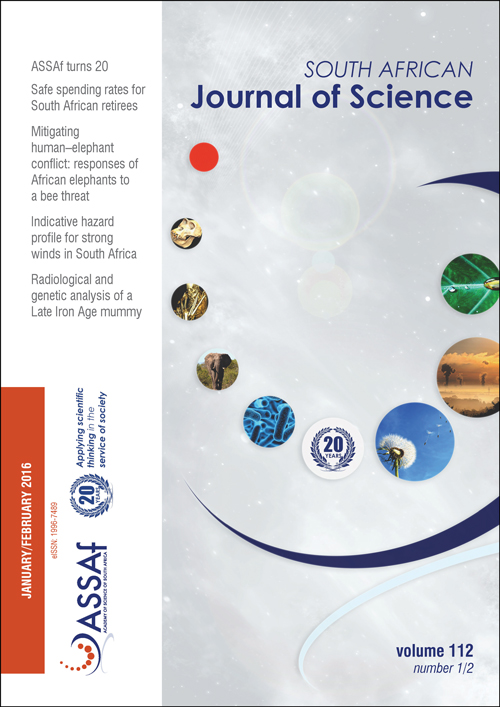Evidence for aeolian origins of heuweltjies from buried gravel layers
DOI:
https://doi.org/10.17159/sajs.2016/20150025Keywords:
mima-mounds, termite, erosion, vegetation pattern, calcreteAbstract
Although heuweltjies (19–32 m diameter) dominate the surface of much of the southwestern Cape of South Africa, their origins, distribution and age remain controversial. Current hypotheses are that the heuweltjies are (1) constructed by the excavation and mounding habits of burrowing animals; (2) the result of erosion by water of areas between patches protected from fluvial action by denser vegetation or (3) the product of localised aeolian sediment accumulation beneath denser vegetation associated with termitaria. At a site where quartz-containing gravels occur on the soil surface in areas between heuweltjies, these gravels were found to extend as a relatively intact layer of uniform concentration from the inter-mound area into the mound at the same plane as the surrounding soil surface. This buried layer suggests that heuweltjies were either built-up by deposition on a previous soil surface layer or eroded from sediment accumulated above the buried gravel layer. Mounds contain a relatively large proportion of silt consistent with sediment deposition. Mound sediment elemental composition was strongly correlated with that of local shale, indicating a local source of sediment. Pedogenesis was considerably more advanced off- than on-mound. There was no evidence of extensive regional aeolian sediment mantling over the vast area in which the heuweltjies occur. These findings and observations support the aeolian deposition hypothesis of heuweltjie origins combined with a degree of erosion, rather than a termite bioturbation hypothesis or a predominantly erosion-based hypothesis.
Published
Issue
Section
License

This work is licensed under a Creative Commons Attribution 4.0 International License.

All articles are published under a Creative Commons Attribution 4.0 International Licence
Copyright is retained by the authors. Readers are welcome to reproduce, share and adapt the content without permission provided the source is attributed.
Disclaimer: The publisher and editors accept no responsibility for statements made by the authors
How to Cite
- Abstract 479
- PDF 428
- EPUB 201
- XML 230













.png)